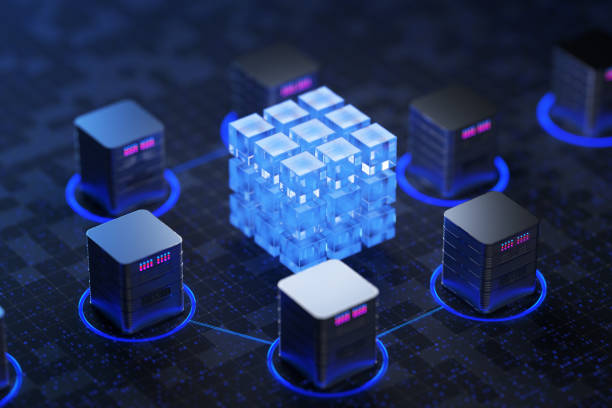The internet is a vast web of connections where data constantly travels from one place to another. Every time you open a website, send a message, or stream a video, information flows between your device and distant servers around the world. Hidden within this invisible exchange are systems that manage, monitor, and sometimes manipulate how that data moves. One of the most fundamental of these systems is the proxy server.
A proxy server acts as an intermediary between you and the internet. It is not simply a relay; it is a control point, a filter, and sometimes a guardian. Understanding what a proxy server is, how it routes your traffic, and why it is used can reveal a great deal about how the modern internet truly functions.
To grasp the importance of proxies, it helps to imagine the internet as a network of highways. Your device is like a car trying to reach a destination—the website or service you want to access. Normally, you would drive directly to that location. But with a proxy server, your traffic is rerouted through another stop first. That stop may inspect your request, change your identifying details, cache a previous copy of the page, or even decide whether you are allowed to proceed. Proxies can protect your privacy, enhance performance, enforce policies, or—if misused—surveil or censor.
Understanding proxy servers means understanding the intersection of connectivity, security, and identity online.
The Core Concept of a Proxy Server
A proxy server is an intermediary computer system that stands between a client (such as your web browser) and the servers that host the websites or applications you access. When you send a request to the internet—say, to load a webpage—your device sends it to the proxy instead of directly to the destination server. The proxy then forwards the request on your behalf, retrieves the data, and sends it back to you.
From the perspective of the website, it appears as though the request came from the proxy server, not from your own device. This masking of identity is one of the key functions of a proxy. Depending on how the proxy is configured, it can hide your IP address, filter certain content, cache data to improve load times, or log and analyze your activity.
A proxy sits logically between the client and the destination. It operates at various levels of the network stack, depending on its purpose. Some proxies function at the application level—handling HTTP, HTTPS, or SOCKS traffic—while others operate lower down, managing all outgoing and incoming packets for an entire network.
The fundamental purpose of any proxy is control. It gives administrators or users a point at which they can intercept and influence traffic, shaping how data flows in and out of systems.
How Internet Traffic Moves
To understand what a proxy actually does, one must first grasp how internet traffic normally travels. When you open a browser and type a website’s address, your computer begins a process of resolution and routing. It first contacts a Domain Name System (DNS) server to translate the human-readable domain (like example.com) into an IP address, the numeric location of the web server. Once it knows where to send your request, it establishes a connection, often through the Transmission Control Protocol (TCP), and exchanges data.
Your device sends packets—small chunks of data that carry information about where they are coming from and where they are going. These packets traverse routers, switches, and various networks before reaching the destination server. The server processes your request, sends back the appropriate response, and your device reassembles the incoming packets into the web page or application data you see on screen.
When a proxy server is introduced into this path, it alters the route. Instead of packets going directly from your computer to the destination, they are directed to the proxy first. The proxy then handles the communication with the remote server. This creates a chain of trust and control: you communicate with the proxy, and the proxy communicates with the world.
The Role of IP Addresses and Identity
Every device connected to the internet is assigned an Internet Protocol (IP) address—a unique identifier that functions like a digital mailing address. Websites and online services use IP addresses to identify where requests come from and where to send data back. However, IP addresses also reveal geographic and sometimes organizational information.
When you connect through a proxy, your own IP address is hidden. The remote server sees only the proxy’s IP. This concealment forms the basis of many privacy and security functions. For individuals, it can protect anonymity and prevent tracking. For organizations, it can create controlled gateways between internal networks and the public internet.
At the same time, proxies can also perform identification and surveillance. Corporate and government proxies often record which users access specific resources. By centralizing all traffic through one or more proxy servers, administrators can monitor usage, enforce access rules, and detect suspicious activity.
Thus, the proxy becomes both a mask and a mirror—concealing some information while revealing or recording other details depending on its configuration and purpose.
Types of Proxy Servers
While all proxies share the same fundamental intermediary role, they differ in configuration, purpose, and the level of anonymity they provide. There are several major categories of proxy servers, each designed for specific scenarios.
The most basic is the forward proxy. A forward proxy sits between internal clients and the external internet. It accepts outgoing requests from users inside a network, forwards them to the appropriate external servers, and returns the results. Forward proxies are commonly used in corporate networks and educational institutions to control and monitor employee or student access.
In contrast, a reverse proxy sits on the opposite side of the communication path—between external clients and internal servers. Reverse proxies are used by website administrators to protect backend servers, balance incoming traffic, cache content, and provide additional layers of security. When you access a large website like a streaming service or an online retailer, chances are your request first hits a reverse proxy rather than the actual web server.
Transparent proxies intercept traffic without requiring configuration on the user’s device. They are often used by internet service providers or organizations that want to filter or monitor traffic invisibly. Anonymous and elite proxies, on the other hand, explicitly focus on privacy, removing or obfuscating headers that might reveal user identity.
Some proxies specialize in protocol handling. HTTP proxies handle web traffic, while SOCKS proxies work at a lower level and can route many different types of traffic, including email and peer-to-peer connections. Each type of proxy balances speed, security, and anonymity differently.
The Functionality of Forward Proxies
A forward proxy serves as the primary gateway from a private network to the broader internet. When configured on a client device or within a network, all outbound requests pass through the proxy. It can filter which websites are accessible, log browsing activity, and cache frequently visited content to reduce bandwidth consumption.
Forward proxies also play an important role in security. They can enforce content policies by blocking access to malicious sites, prevent data exfiltration by restricting uploads, and scan outgoing traffic for malware or confidential information. In corporate environments, forward proxies help administrators ensure compliance with internal security policies and external regulations.
Caching is another crucial function. When multiple users within a network frequently access the same resources—like news sites or software updates—the proxy can store local copies of these files. Subsequent requests can be served directly from the cache, reducing latency and network load.
However, forward proxies require trust. Because they handle all user traffic, they have visibility into everything users send or receive. If compromised or misconfigured, a forward proxy can become a surveillance tool or a point of data leakage.
The Role and Mechanics of Reverse Proxies
Reverse proxies serve the opposite role, protecting servers rather than clients. They act as an entry point for external users, managing how requests reach backend systems. Large-scale web services rely heavily on reverse proxies to ensure reliability and scalability.
When a user connects to a popular website, the reverse proxy receives the request first. It determines which backend server should handle it, based on load balancing rules or geographic proximity. The proxy then forwards the request and relays the server’s response back to the user.
Because users never communicate directly with the backend, the servers remain hidden from public view. This isolation reduces the attack surface and allows administrators to apply security measures—like rate limiting, SSL termination, or web application firewalls—at the proxy level. Reverse proxies can also cache static content, improving performance and reducing server load.
In modern cloud environments, reverse proxies form part of a larger system known as a content delivery network (CDN). CDNs distribute proxy nodes across different regions, serving content from locations closest to the user. This global network of proxies ensures that websites load faster and more reliably, even during heavy traffic.
How Proxies Route Your Traffic
The routing process in a proxy environment involves multiple layers of redirection and translation. When your device sends a request to the internet, the operating system or application routes it to the proxy instead of the destination host. The proxy examines the request, possibly modifies headers, and establishes a new connection to the target server.
At this stage, the proxy can choose how to route the traffic. It may connect directly to the destination, pass the request through multiple intermediary proxies (a proxy chain), or apply load-balancing algorithms. Some advanced proxies use intelligent routing that considers latency, bandwidth, and reliability to choose the optimal path.
Once the remote server responds, the proxy receives the data, performs any required processing—such as decryption, caching, or inspection—and then forwards the result back to the client. From the user’s perspective, the process is nearly instantaneous.
In some cases, proxies modify both requests and responses. They may inject headers, compress data, translate content, or even replace advertisements. This flexibility allows proxies to implement policies and optimizations at the network level without altering end-user applications.
Security and Privacy Implications
Proxies can enhance security, but they can also undermine it depending on how they are used. On the positive side, proxies can isolate internal networks from external threats. By acting as a gateway, they prevent direct connections between users and unknown servers, reducing exposure to attacks. Proxies can also log traffic for forensic analysis, block malware domains, and enforce encryption policies.
However, the same visibility that enables these protections also creates privacy risks. Because proxies can inspect and modify traffic, they are capable of monitoring user activity in detail. In untrusted environments, such as public Wi-Fi networks or malicious proxy servers, this capability can be exploited to steal credentials, inject advertisements, or track browsing behavior.
Encrypted proxies, such as HTTPS or SOCKS5 over TLS, mitigate some of these risks by protecting data in transit. But even encrypted traffic can be analyzed for patterns, metadata, or destination information. Users who rely on third-party proxies for anonymity must therefore trust that the operator will not log or misuse their data.
Government and corporate proxies often use deep packet inspection to monitor or censor online activity. Such systems can block access to political content, restrict social media, or enforce national security policies. Thus, while proxies are vital tools for privacy and control, they can also become instruments of surveillance and censorship.
Proxy Chaining and Multi-Hop Routing
For enhanced anonymity, users and organizations sometimes employ multiple proxies in sequence, a practice known as proxy chaining. Each proxy in the chain only knows the previous and next hop, making it difficult for any single server to trace the full route between client and destination.
This concept is similar to how anonymity networks like Tor operate, where traffic passes through multiple volunteer-run relays. Each relay decrypts a single layer of encryption, revealing only the next destination, ensuring that no node knows both the sender and the final recipient.
Proxy chaining can also distribute load and add redundancy, but it introduces latency. Each additional hop adds processing time and potential points of failure. Therefore, chaining is typically used only when anonymity or jurisdictional separation outweighs performance considerations.
Proxies vs. VPNs
Proxy servers are often confused with Virtual Private Networks (VPNs), as both hide a user’s IP address and route traffic through an intermediary. However, they differ in scope and level of protection.
A proxy routes traffic for specific applications or protocols, while a VPN encrypts all network traffic from the device and tunnels it through a secure connection to a remote server. VPNs operate at a lower level of the networking stack, providing end-to-end encryption that proxies typically do not.
While proxies can be faster and easier to configure for specific use cases—such as accessing geo-restricted websites—VPNs offer stronger privacy by encrypting the entire communication path. However, both systems require trust in the operator, as the intermediary still has access to data in some form.
The Role of Proxies in Modern Networks
In modern enterprise and cloud infrastructures, proxies are indispensable. They serve as gateways for secure access, performance optimization, and policy enforcement. Companies deploy forward proxies to monitor employee activity, detect insider threats, and prevent data leakage. Reverse proxies, in turn, secure web applications from external attacks and distribute traffic across clusters of servers.
Cloud providers integrate proxies within their service layers. Load balancers, API gateways, and web accelerators all rely on proxy principles. In content delivery networks, edge proxies cache data and serve users from the nearest node, improving speed and reliability.
Proxies also play a vital role in cybersecurity research and penetration testing. Ethical hackers use intercepting proxies to analyze web traffic, identify vulnerabilities, and test the resilience of encryption and authentication mechanisms.
Performance Optimization and Caching
One of the most powerful features of proxies is caching. By storing copies of frequently accessed resources, proxies reduce redundant data transfers and improve load times. When multiple users request the same content, the proxy can serve it instantly from local storage rather than fetching it again from the remote server.
Caching is especially valuable in large organizations, where hundreds or thousands of users might access the same resources daily. It not only accelerates performance but also conserves bandwidth and reduces strain on upstream servers.
Reverse proxies use caching to speed up websites. Static resources such as images, scripts, and stylesheets are stored close to users. Dynamic content can also be cached for short periods based on rules that balance freshness with performance.
However, caching must be managed carefully. Stale or improperly invalidated caches can serve outdated or unauthorized data. Secure configurations ensure that sensitive content is never cached publicly, preserving both performance and privacy.
Transparent Proxies and Ethical Concerns
Transparent proxies intercept traffic automatically, often without user consent. Internet service providers may use them to compress data, insert advertisements, or enforce parental controls. While these proxies can improve performance or reduce bandwidth costs, they raise ethical and privacy concerns.
Because users are unaware of interception, they cannot verify whether traffic is being modified or monitored. In some cases, transparent proxies have been used to inject malware, alter search results, or harvest user data. Even when intentions are benign, the lack of transparency undermines trust.
Ethical network design requires that users know when proxies are in use and what data is being collected. Transparency and consent are essential for maintaining privacy in an increasingly mediated internet.
The Future of Proxies in an Encrypted Internet
The internet is moving toward ubiquitous encryption, with HTTPS becoming the default for nearly all web traffic. This shift complicates traditional proxy operations, which relied on inspecting unencrypted data. To adapt, modern proxies perform SSL interception or termination—decrypting traffic at the proxy, analyzing it, and then re-encrypting it before forwarding.
While this approach allows continued filtering and security scanning, it also introduces new risks. The proxy becomes a point of potential compromise, and users must trust that it handles decryption securely. Misconfigured SSL interception can expose private data or weaken overall security.
In response, new standards such as encrypted client hello (ECH) and DNS-over-HTTPS (DoH) are designed to conceal more of the communication process from intermediaries. This trend challenges proxies to evolve in ways that respect both privacy and organizational control.
Conclusion
A proxy server is far more than a simple relay. It is a mediator that shapes how information flows across the internet. By routing traffic, concealing identity, caching content, and enforcing policies, proxies form one of the foundational layers of online communication.
They can protect privacy, improve performance, and secure networks, but they can also be used for surveillance, censorship, or manipulation. Understanding how proxies work—both technically and ethically—is essential in an age when every digital interaction passes through unseen intermediaries.
In the end, the story of proxy servers is the story of control and trust on the internet. Every time data moves between you and the wider world, a proxy may be standing in between, deciding what gets through, what is blocked, and how your digital identity is presented. Whether for good or ill, proxies remain the invisible hands that guide the flow of information through the arteries of the modern web.






